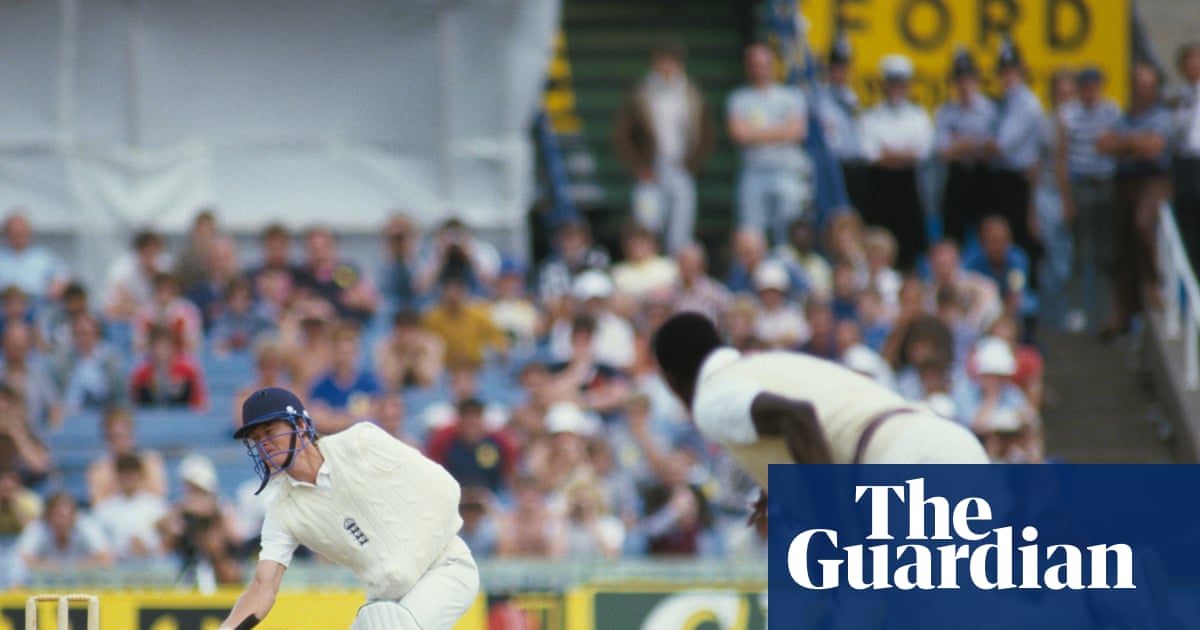 |
|
The echoes of bravery resonate through the annals of cricket, moments where physical pain is momentarily eclipsed by the unwavering commitment to team and country. The recent sight of Chris Woakes emerging to bat for England with a dislocated shoulder stirred the memories of many, transporting them back to a similar act of resilience displayed almost four decades ago by Paul Terry. While the circumstances differed, the underlying spirit of selflessness remained the same – a willingness to endure pain and potential further injury for the sake of the team's cause. Woakes's appearance, though ultimately unsuccessful in securing a victory against India, served as a potent reminder of the grit and determination that defines the sport, and instantly drew comparisons to Terry's remarkable innings against the West Indies in 1984. The article chronicles Terry's courageous act, highlighting the context of the match, the severity of his injury, and the impact his decision had on the game and his teammate, Allan Lamb. This is not just a simple recounting of a sporting event, but a deep exploration of the values of courage, sacrifice, and the enduring spirit of sportsmanship. It delves into the details of the West Indies’ dominance, England’s struggle, and the personal battles fought within the larger context of the test match, emphasizing the human element that elevates sports beyond mere competition.
The 1984 Test series between England and the West Indies was a stark illustration of contrasting fortunes. The West Indies, a cricketing juggernaut at the time, had already established a commanding 3-0 lead. The Old Trafford Test seemed destined to follow a similar pattern. Despite initially reducing the West Indies to 70 for four, a magnificent double century from Gordon Greenidge and a century from Jeff Dujon propelled the visitors to a formidable total of 500. England's response was initially promising, with Graeme Fowler and Chris Broad forging a 90-run opening partnership. However, Fowler's courageous innings, played after being struck on the helmet by Winston Davis, came to an end, triggering a collapse. Suddenly, the score plummeted from 90 for none to 147 for five, leaving England in dire straits. Adding to their woes, Paul Terry, already nursing injuries sustained while fielding, was in hospital, effectively reducing England to six wickets down. Terry's ordeal began earlier in the match when he was struck on the knee and chest while fielding at short leg. He then came in at the fall of the first wicket and had moved onto seven when disaster struck. Facing the pace of Winston Davis, Terry misjudged a short delivery. His attempt to duck was too late, and the ball crashed into his unprotected left arm. The immediate pain was evident, and Terry was led off the field, his arm clearly injured. Scans revealed a broken left forearm, seemingly ending his participation in the match and the season. England ended day three on 163 for five, and defeat appeared inevitable.
Amidst the gloom, a glimmer of hope emerged in the form of Allan Lamb, who was approaching a third consecutive Test century against the formidable West Indies attack. As Lamb neared his milestone, Pat Pocock and Norman Cowans were dismissed, leaving England precariously poised at 278 for nine. With Terry seemingly unable to bat, Lamb appeared destined to be stranded just short of his century. The West Indians were preparing to leave the field when a surprising turn of events unfolded. England's dressing room door opened, and captain David Gower signaled for everyone to remain. Paul Terry, against all expectations, was preparing to resume his innings. The scene was described as one of 'high drama and pathos,' as Terry, with his broken arm, made his way to the non-striker's end. His primary objective was to assist Lamb in reaching his century, and there was also a slim possibility of saving the follow-on, which required England to score 302. Lamb faced five deliveries from Michael Holding before turning the last ball of the over to fine leg. Confusion then reigned. Lamb believed Terry wasn't supposed to face a ball, and he had expected to run a single from his last stroke. However, Terry ran two, indicating his willingness to continue. Lamb reached his century, becoming the first England player since Ken Barrington in 1967 to score three consecutive Test hundreds. He looked to Gower on the England balcony, but instead of declaring the innings, Gower remained unmoved. Terry was now preparing to face Joel Garner with one arm.
The decision to continue the innings sparked debate. Some criticized Gower for not declaring after Lamb's century, while others questioned Lamb's selfishness in prioritizing his personal milestone. However, Terry himself exonerated both of any wrongdoing, stating that it was his decision to return to the crease and support Lamb. He acknowledged the remote possibility of saving the follow-on and felt it was worth the attempt. Terry's optimism was admirable, but the task was daunting. He faced only two balls from Garner. After backing away so far he was nearly at square leg when Joel bowled,” Terry joked. “Pat Pocock suggested I should bat left-handed to protect my arm but I said I didn’t want to finish up with two broken arms.” Garner inevitably bowled Terry with the next delivery, bringing the England innings to a close. England ultimately lost the match by an innings and 64 runs. Despite the defeat, Terry's courageous act left a lasting impression. He never played for England again, but his willingness to put his body on the line demonstrated admirable qualities. The article concludes by drawing a parallel between Terry's sacrifice and Woakes's recent act of bravery, hoping that Woakes's England career does not end in a similar fashion. The comparison highlights the enduring appeal of selflessness and the willingness to endure pain for the sake of the team. Terry’s story is a reminder that some moments in sports transcend the game itself.
Source: When Paul Terry went out to bat for England with a broken arm
